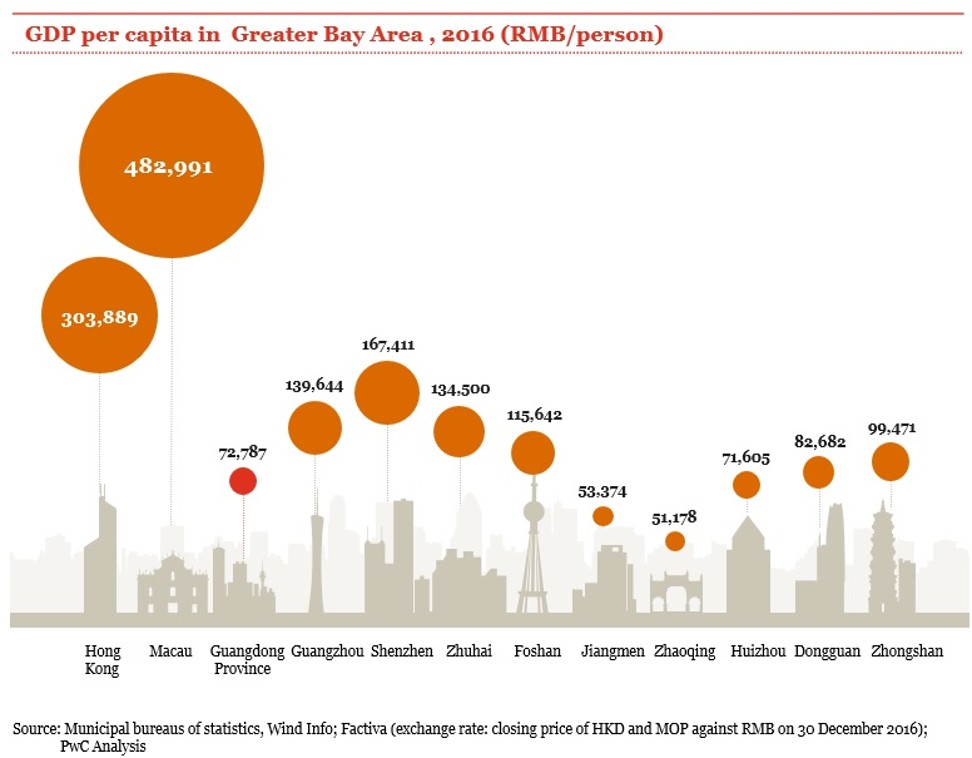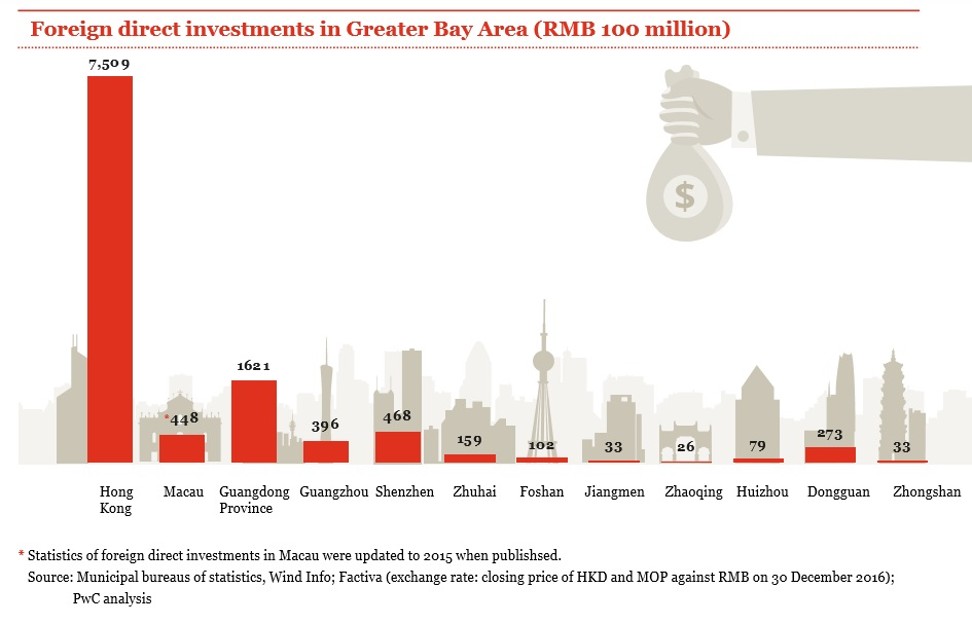
Turn down a seat at the Greater Bay’s US$1.5 trillion feast? That timidity is very unlike Hong Kong’s entrepreneurial spirit
- We would not be asking for favours, but pointing to the changes that would add to the strength and dynamism of the hole region, just as they did for Hong Kong
- There is a fringe minority - let’s call them “Hexiters” - who seek to keep the Greater Bay Area at arm’s length
I remember large Hong Kong maps that used to hang on the walls of the offices of British colonial officials, that reached the Shenzhen River boundary and then went blank white.
It was as if there was nothing of value beyond the creaky Lo Wu bridge, or that Shenzhen was an empty space waiting for Hong Kong people and businesses to populate it.
Today, as Beijing has asked us to play a role in forging the Greater Bay Area, there are doubtless some who still nurture such naive and ignorant dreams. Alongside them sit a tiny eccentric minority - let’s call them “Hexiters” in homage to the Little Englanders that are catastrophically wrenching the UK out of the European Union - who seek to keep the Greater Bay Area firmly at arm’s length.
But for most of us, the practical - and very useful - reality is that an economy has grown around us that is today one of the largest and most dynamic regional economies in the world.
It amounts to around 70 million people and has an economic output estimated at US$1.5 trillion - the same size at South Korea and bigger then Australia.
We can claim some credit in this, with tens of thousands of Hong Kong investors over the past four decades building a large part of its early industrial infrastructure. But over the past decade or so, the region has assumed a life and personality of its own. In some ways it has outgrown us, with Shenzhen and Guangzhou today having significantly larger populations, and clear and distinct strengths of their own.
Beijing has invited us not only to build closer links with the region, but also to play a role in shaping it. What kind of foolishness would persuade us not to take maximum advantage of such an invitation?
Participants were reminded that a recent Post poll had found that 66 per cent of respondents believed that Hong Kong would not benefit. This is surely not a time for pusillanimity. We have an opportunity that we need to grasp with both hands.
Infographics: A time lapse view of the evolution of the ‘Greater Bay Area’
But before we plunge in, we also need to recognise that the Greater Bay Area initiative is not a new version of the Closer Economic Partnership Agreement (CEPA), the annual Hong Kong wish list process that allows Hong Kong business interests to press for concessions that give us better access to opportunities inside the Mainland economy.
It is an invitation to look carefully at a large and diverse economic region (of which we are a part) and contribute ideas that would make it stronger - not in the interests of Hong Kong, but in the interests of the whole region.
Not just an efficient and integrated transport infrastructure, but digital integration, joint educational development, and collaboration on health care.
There seem to be many who believe the task is to agree who is strongest at what - Hong Kong in finance and international trading, Shenzhen in new technologies, Foshan at robotics, and so on - and then get agreement to channel resources to build on those different strengths.
If this were so, then the initiative would be an arm-wrestling scramble for Beijing’s favours that would do little to strengthen or integrate the region.
Others are focusing on changes across the region that would help Hong Kong entrepreneurs build market share in this large and increasingly affluent market. That would of course be fine for us in Hong Kong, but unlikely to appeal to our counterparts in Dongguan, Zhongshan or Guangzhou who doubtless have politicians and business leaders with their own agendas and priorities.
Infographics: The who, what and where of the ‘Greater Bay Area’
Surely for Hong Kong, the first challenge is to recognise the implied transformation from a specialised city economy that faces outwards, helping outsiders get access to the dark and mysterious Mainland markets, to a city beginning to look inward as part of a large and diversified regional economy, that over the next decade is likely to grow to be as big as Germany.
Should my ATM card not work on ATMs across the Greater Bay Area? Should my Octopus card not serve me as well in Jiangmen as in Hong Kong? Should I not be taking weekend breaks in the Pearl River Delta just like a Londoner weekends in the Cotswolds or Cornwall?
The second challenge is to recognise the unique strengths and attributes that have made Hong Kong the successful economy that it is, and advocate fiercely to our counterparts and to Beijing that it would be in everyone’s best economic interest if we took advantage of these strengths in the interests not of Hong Kong, but of the entire regional economy.
That might be low and simple taxes. It might also be light-handed regulation. The key point is that we would not be asking for favours, but pointing to changes that would contribute to the strength and dynamism of the region as a whole, just as they have in decades past contributed to Hong Kong’s own success.
We are envisaging Hong Kong not as a specific centre for specific economic activities, but as a role model for our region’s future development.
The next challenge will be to build institutions that bring our people together - our government officials, our business organisations, and our cultural organisations. Regional integration can never happen without regional organisations that bring us together to look at the region as a whole and to address challenges together.
Can anyone name even one organisation that brings Hong Kong and Macau’s business and government leaders together with counterparts from across the region to tackle shared problems - like pollution, or developing the region’s skills needs?
We need fully to recognise the decision made in Beijing to allow the Greater Bay Area to grow as a major experimental zone for China, and a leader in reform. This offers Hong Kong a precious opportunity to export the institutions and practices that have made us uniquely strong and the competitive envy of most economies worldwide.
We have a chance to demonstrate to our Mainland counterparts what ingredients have made Hong Kong so successful, and why they should emulate them. This is a time to plan, not procrastinate.
David Dodwell researches and writes about global, regional and Hong Kong challenges from a Hong Kong point of view



